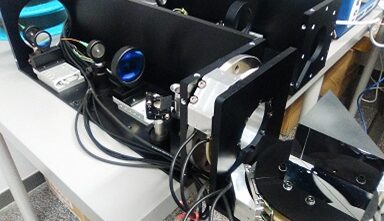Design and development of a laser system for the inspection and metrology of the ITER fusion chamber.
ITER (International Thermonuclear Experimental Reactor) needed to develop and build a visualization and metrology system (IVVS – In-Vessel Viewing System) for the inspection of the Tokamak. This system will allow 3D mapping of the elements inside the Tokamak to detect any damage or erosion of its components that may occur during its activity. This system is a key element to verify and control the safety levels of the ITER plant.
Analysis of complementary solutions, design and development of the optical prototype and implementation of tests.
ASE Optics Europe has been responsible for the analysis of complementary solutions for the IVVS concept, including the design of the optical prototype system, and the implementation of the tests. We built an intcon optical test bench, a prototype of reduced dimensions to measure the operation and performance of the piezoelectrics and confirm that they were suitable for the 3D scanning function envisaged by ITER.
For more than four years, ASE Optics Europe has been carrying out work for ITER in the framework of this project together with Veolia Nuclear Solutions (consortium leader). This work is an extension of the IVVS approved design concept, thanks to the support of F4E and EFDA and in collaboration with ENEA Frascati Laboratories.
Results – developments and publications
During the duration of the project, we have had the honor of publishing two articles presenting the advances, discoveries and innovations developed within the framework of the ITER – IVVS project:
- In-vessel viewing system prototype performance measurements and simulation of measurement quality across the ITER in-vessel components (Thomas Siegel, et al., Fusion Engineering and Design, https://doi.org/10.1016/j.fusengdes.2019.03.187)
- High-dynamic-range instrument for characterisation of the angledependent reflectivity of ITER plasma-facing components (Proc. SPIE 11485, Reflection, Scattering, and Diffraction from Surfaces VII, 114850O (20 August 2020); doi: 10.1117/12.2567372)
If you are interested in the details, you can order a copy of the articles here:

